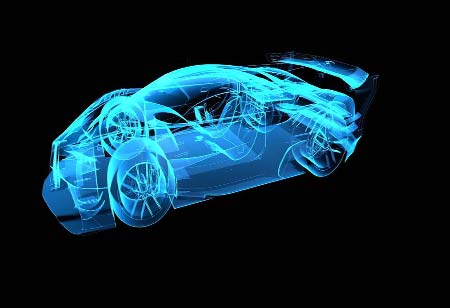THANK YOU FOR SUBSCRIBING
THANK YOU FOR SUBSCRIBING
Be first to read the latest tech news, Industry Leader's Insights, and CIO interviews of medium and large enterprises exclusively from Auto Tech Outlook

By
Auto Tech Outlook | Friday, June 02, 2023
Stay ahead of the industry with exclusive feature stories on the top companies, expert insights and the latest news delivered straight to your inbox. Subscribe today.
The use of sensors is significant in automobiles. They make it possible for futuristic designs and higher levels of vehicle automation.
Sensors are essential in automobiles. They allow for greater levels of vehicle automation and modernistic designs. Sensorised robotic arms, for example, are used in manufacturing units to paint car bodies and measure the thickness of the coatings being applied. Using sensors, manufacturers can simply monitor the thickness of the paint being sprayed on instruments, airbag claddings, and various internal parts of vehicles.
Sensors monitor engine performance, fuel consumption, and emissions, as well as assist and protect drivers and passengers. These enable automakers to introduce vehicles that are safer, more fuel efficient, and more comfortable to drive.
Sonar
Future automobiles will be more connected owing to vehicle-to-vehicle (V2V) communication sensor technology. To determine the distance to an object, sonar creates precise maps using light reflections and sound wave echoes.
Ford has been experimenting with sonar technology to let cars sense one another and improve the visibility of other cars nearby. As a result, automobiles will be able to avoid collisions when a car in close proximity swerves since the car will promptly brake when it detects another car nearby. The correct network of linked automobiles is essential for this technology to succeed; the bigger that network is, the more accurate it will be.
Far Infrared Technology
The coverage required to make automobile vehicles safe in any setting or climate is provided by far infrared (FIR) technology. The FIR camera assists in interpreting signals from objects that radiate heat, improving safety and adaptive cruise control features. The camera that uses FIR technology can passively sense these impulses, allowing it to capture images that other cameras would be unable to. The cameras' ability to detect anything nearby means they can effortlessly locate lane markings and hence map the whereabouts of pedestrians.
Lidar
Unlike radar, which transmits radio waves, lidar uses invisible to the human eye infrared light pulses to identify objects and calculates the time it takes for each pulse to strike the target.
By timing how long it takes for a pulse to be transmitted and for its reflection to be received, one can determine how far away an item or surface is. Lidar provides the driver with measurements, data, and the ability to identify smaller objects than radar. Regardless of lighting conditions, lidar technology produces a precise, comprehensive 3D image that makes it simple to isolate objects and identify what is in front of or behind them. Experts in the robotic car industry believe that lidar will be essential for the next generation of automotive vehicles.
The automotive industry is experimenting with the aforementioned sensor technologies as well as others, and this innovation will influence how intelligent vehicles function in the future. Future automobiles are likely to incorporate these technologies and may possibly pave the way for driverless vehicles far sooner than one might believe.
 Copyright © 2025 AutoTech Outlook. All Rights Reserved | Privacy Policy | Subscribe | Sitemap | About us | Feedback Policy | Editorial Policy
Copyright © 2025 AutoTech Outlook. All Rights Reserved | Privacy Policy | Subscribe | Sitemap | About us | Feedback Policy | Editorial Policy 



